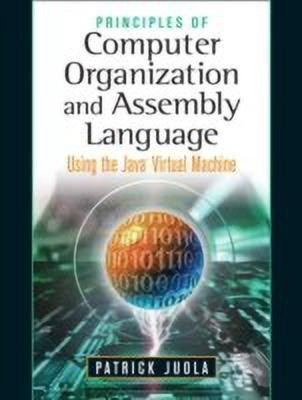Principles of Computer Organization and Assembly Language(English, Paperback, Juola Patrick)
Quick Overview
Product Price Comparison
Today's incoming students are more likely to be exposed to Java than ever before. Focusing on a modern architecture (the Java Virtual Machine, or JVM), this text provides a thorough treatment of the principles of computer organization in the context of today's portable computer. Students are given simple but realistic examples to gain a complete understanding of how computation works on such a machine. Juola makes the material useful and relevant in a course that is often difficult for second-year CS students. Salient Features Flexible, convenient presentation - The JVM is not a physical chip but a piece of software found on every computer in the world, so students can write and run their exercises on any computer without worrying about compatibility; ideal for commuter or distance education, or schools with limited resources. Focus on the JVM Language - Explains how the Java language actually causes things to happen. Presentation of alternate architectures - Compares the JVM to the original IBM-PC chip, the Pentium, the Power PC, and an embedded controller chip to explore how other computers express the same principles. Principle-based approach - Allows transfer between machines. Multi-Language Examples - Integrate several computer operating systems, including Windows, Linux, Mac, BeOS and Solaris; students do not need a prior understanding of Java. Tested code examples - Eliminates errors that could confuse students. Optional chapters that are tunable to individual equipment. Key Issues - Summarizes each chapter with a brief review of important concepts.


